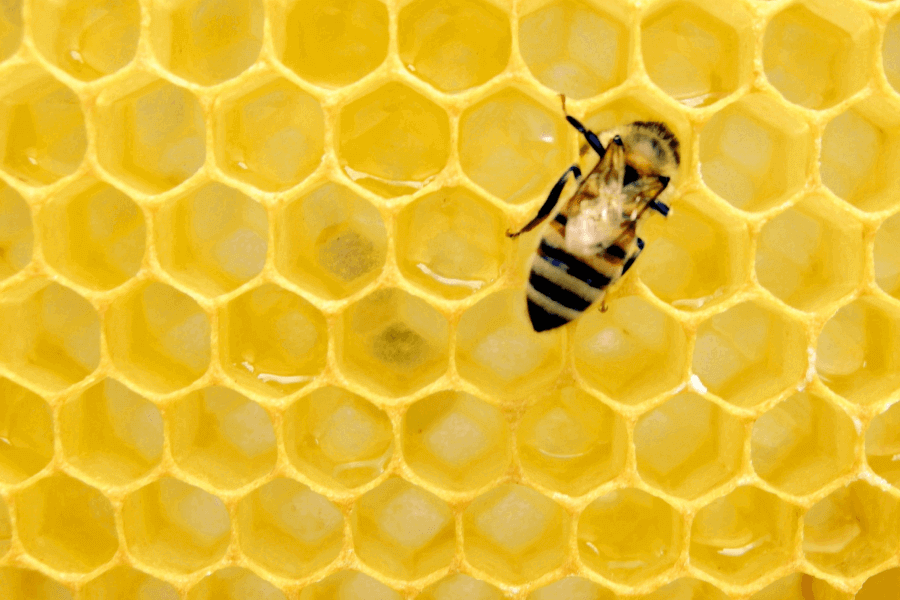Secrets Of The Swarm
Insects, birds and fish tend to be the creatures that humans feel furthest from. Unlike many mammals they do not engage in humanlike behaviour. The way they swarm or flock together does not usually get good press coverage either: marching like worker ants might be a common simile for city commuters, but it’s a damning, not positive, image. Yet a new school of scientific theory suggests that these swarms might have a lot to teach us.
American author Peter Miller explains, ‘I used to think that individual ants knew where they were going, and what they were supposed to do when they got there. But Deborah Gordon, a biologist at Stanford University, showed me that nothing an ant does makes any sense except in terms of the whole colony. Which makes you wonder if, as individuals, we don’t serve a similar function for the companies where we work or the communities where we live.’ Ants are not intelligent by themselves. Yet as a colony, they make wise decisions. And as Gordon discovered during her research, there’s no one ant making decisions or giving orders.
Take food collecting, for example. No ant decides, ‘There’s lots of food around today; lots of ants should go out to collect it.’ Instead, some forager ants go out, and as soon as they find food, they pick it up and come back to the nest. At the entrance, they brush past reserve foragers, sending a ‘go out’ signal. The faster the foragers come back, the more food there is and the faster other foragers go out, until gradually the amount of food being brought back diminishes. An organic calculation has been made to answer the question, ‘How many foragers does the colony need today?’ And if something goes wrong a hungry lizard prowling around for an ant snack, for instance then a rush of ants returning without food sends waiting reserves a ‘Don’t go out’ signal.
But could such decentralised control work in a human organisation? Miller visited a Texas gas company that has successfully applied formulas based on ant colony behaviour to ‘optimise its factories and route its trucks’. He explains, ‘If ant colonies had worked out a reliable way to identify the best routes between their nest and food sources, the company managers figured, why not take advantage of that knowledge?’ So they came up with a computer model, based on the self-organising principles of an ant colony. Data is fed into the model about deliveries needing to be made the next day, as well as things like weather conditions, and it produces a simulation determining the best route for the delivery lorries to take.
Miller explains that he first really understood the impact that swarm behaviour could have on humans when he read a study of honeybees by Tom Seeley, a biologist at Cornell University. The honeybees choose as a group which new nest to move to. First, scouts fly off to investigate multiple sites. When they return they do a ‘waggle dance’ for their spot, and other scouts will then fly off and investigate it. Many bees go out, but none tries to compare all sites. Each reports back on just one. The more they liked their nest, the more vigorous and lengthy their waggle dance and the more bees will choose to visit it. Gradually the volume of bees builds up towards one site; it’s a system that ensures that support for the best site snowballs and the decision is made in the most democratic way.
Humans, too, can make clever decisions through diversity of knowledge and a little friendly competition. 'The best example of shared decision making that I witnessed during my research was a town meeting I attended in Vermont, where citizens met face-to-face to debate their annual budget,’ explains Miller. ‘For group decision making to work well, you need a way to sort through the various options they propose; and you need a mechanism to narrow down these options.’ Citizens in Vermont control their municipal affairs by putting forward proposals, or backing up others’ suggestions, until a consensus is reached through a vote. As with the bees, the broad sampling of options before a decision is made will usually result in a compromise acceptable to all. The ‘wisdom of the crowd’ makes clever decisions for the good of the group and leaves citizens feeling represented and respected.
The Internet is also an area where we are increasingly exhibiting swarm behaviour, without any physical contact. Miller compares a wiki website, for example, to a termite mound. Indirect collaboration is the key principle behind information sharing websites, just as it underlies the complex constructions that termites build. Termites do not have an architect’s blueprint or a grand construction scheme. They simply sense changes in their environment, as for example when the mound’s wall has been damaged, altering the circulation of air. They go to the site of the change and drop a grain of soil. When the next termite finds that grain, they drop theirs too. Slowly, without any kind of direct decision making, a new wall is built. A termite mound, in this way, is rather like a wiki website. Rather than meeting up and talking about what we want to post online, we just add to what someone maybe a stranger on the other side of the world already wrote. This indirect knowledge and skill sharing is now finding its way into the corridors of power.

Câu này nếu chỉ skim/scan những từ khoá trên mà không đọc cấu trúc câu hỏi để hiểu nghĩa, thí sinh rất dễ chọn True vì tất cả từ khoá đều giống nhau giữa câu hỏi và bài đọc.
Câu này nếu chỉ skim/scan những từ khoá trên mà không đọc cấu trúc câu hỏi để hiểu nghĩa, thí sinh rất dễ chọn True vì tất cả từ khoá đều giống nhau giữa câu hỏi và bài đọc. 
So sánh nội dung câu hỏi và bài đọc:
So sánh nội dung câu hỏi và bài đọc:

